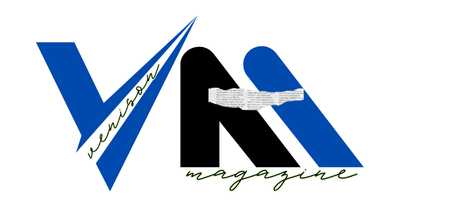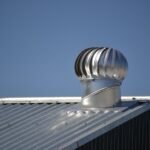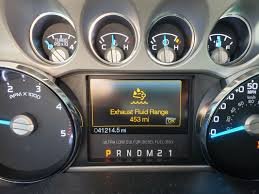Diesel vehicle owners and fleet managers know that keeping a vehicle in top condition means paying attention to more than just fuel and oil levels. One critical fluid that often doesn’t get the attention it deserves is Diesel Exhaust Fluid (DEF). If you’ve recently encountered the term “low DEF kw site slightwave.com,” you’re not alone.
DEF plays a vital role in ensuring your diesel vehicle operates efficiently and complies with environmental regulations. This blog dives deep into what DEF is, why it’s important, and how low DEF levels can impact your vehicle’s performance.
What is DEF?
Diesel Exhaust Fluid (DEF) is a non-toxic, colorless liquid composed of 67.5% deionized water and 32.5% urea. Its primary function? To reduce nitrogen oxide (NOx) emissions, which are harmful pollutants produced by diesel engines.
Why is DEF Important?
- Environmental Compliance: DEF is central to meeting stringent emission standards set forth by agencies like the EPA.
- Vehicle Efficiency: By breaking down harmful emissions, DEF improves engine efficiency and helps avoid potential penalties for non-compliance.
- Sustainability: Using DEF reduces your vehicle’s environmental footprint, which is increasingly important in today’s eco-conscious world.
How DEF Works in Diesel Vehicles
Diesel vehicles equipped with a Selective Catalytic Reduction (SCR) system rely on DEF to reduce NOx emissions. Here’s how it works:
- Injection into the Exhaust System: DEF is sprayed into the hot exhaust gases.
- Chemical Reaction: The SCR catalyst facilitates a chemical reaction, converting nitrogen oxide into nitrogen and water—both harmless byproducts.
- Clean Exhaust Output: This results in significantly cleaner emissions, helping vehicles meet strict environmental regulations.
The efficiency of this process makes DEF an essential part of modern diesel engines.
Signs of Low DEF
One of the clearest indicators of low DEF levels is the activation of your DEF warning light. But what does this light mean?
The DEF Warning Light
Your vehicle’s DEF warning light is a built-in reminder to refill the DEF tank. When illuminated, it means your vehicle’s computer has detected low DEF levels.
Ignoring this warning can have serious consequences:
- Reduced Engine Power: Diesel engines may enter a “limp mode,” restricting performance and power.
- Vehicle Shutdown: Prolonged neglect may lead to the vehicle ceasing operation altogether.
Staying vigilant about your DEF warning light is critical for avoiding these complications.
Causes of Low DEF
Low DEF levels don’t happen by accident. Here are some common causes:
- Regular Use: DEF consumption naturally occurs during regular vehicle operation, so frequent refills are necessary.
- Leaks in the System: If there’s a leak in your DEF system, it can drain the fluid faster than anticipated.
- Contamination: Foreign debris or improper storage methods can contaminate DEF, causing inefficiencies.
- Incorrect Fluid Concentration: Using diluted or non-standard DEF products can compromise performance and increase consumption.
Whatever the cause, addressing low DEF promptly ensures seamless operation.
Refilling the DEF Tank
When it’s time to refill your DEF tank, follow these steps for a smooth process:
- Locate the DEF Fill Port
This is usually marked by a blue cap near the vehicle’s fuel tank or engine bay.
- Choose High-Quality DEF
Always opt for DEF products certified by ISO 22241 standards to avoid contamination.
- Pour Carefully
Use a dedicated DEF nozzle to prevent spills and contamination.
- Follow Capacity Guidelines
Check your vehicle’s manual for tank capacity and avoid overfilling.
By following these precautions, you can extend the life of your SCR system and reduce the frequency of DEF-related issues.
Maintaining Optimal DEF Levels
To keep your diesel vehicle running smoothly:
- Regular Check-ups: Monitor DEF levels during routine vehicle maintenance.
- Store DEF Properly: Keep DEF stored in cool, dry conditions to prevent degradation.
- Use Approved Products: Stick to reputable brands and suppliers to ensure quality.
- Address Warning Lights Immediately: Never postpone refilling your DEF tank when the warning light activates.
Being proactive with DEF maintenance can save you significant time and money in the long run.
Why Understanding Low DEF Matters
Low DEF situations are more than just a warning light—they can disrupt your daily operations, reduce efficiency, and impact environmental compliance. For fleet managers in particular, poor DEF management can lead to costly penalties and downtime.
YOU MAY ALSO LIKE
’68 McLaren M8A 1/43 Scale Rear View Mirrors Review
FAQs
1. What happens if I run out of DEF?
If your DEF runs out, your vehicle may enter limp mode or eventually shut down. Always refill promptly when the warning light activates.
2. How often do I need to refill my DEF tank?
This depends on your vehicle’s usage, but most drivers refill their DEF tank every 5,000 to 7,000 miles.
3. Can I use water instead of DEF in an emergency?
No, using water can damage the SCR system and void warranties. Always use certified DEF.
4. What is the shelf life of DEF?
DEF has a shelf life of about 12 months when stored in optimal conditions (cool and dry).
5. Is low DEF covered under warranty?
This varies by manufacturer, but most warranties don’t cover issues caused by neglecting DEF maintenance.











